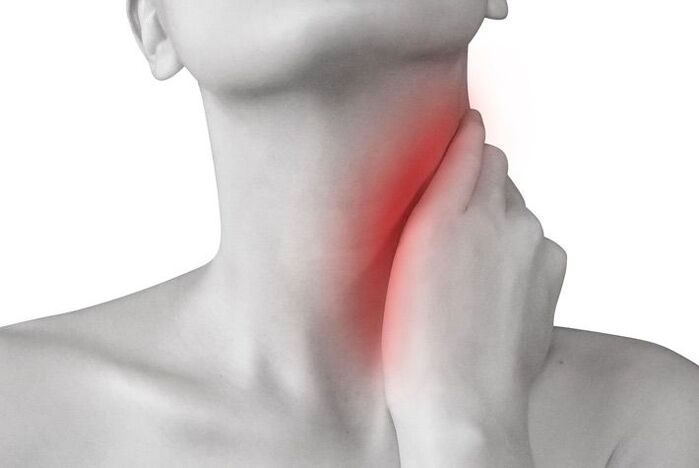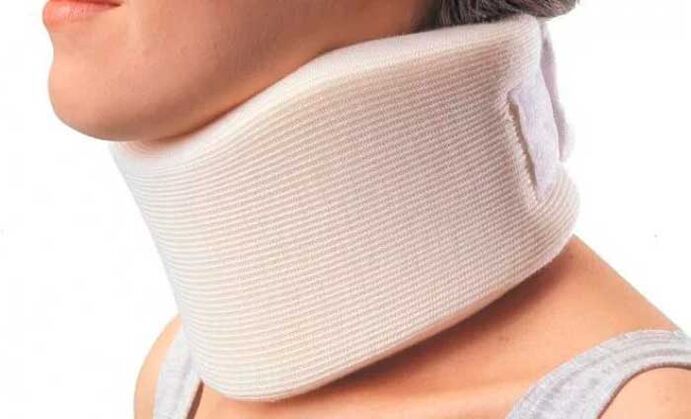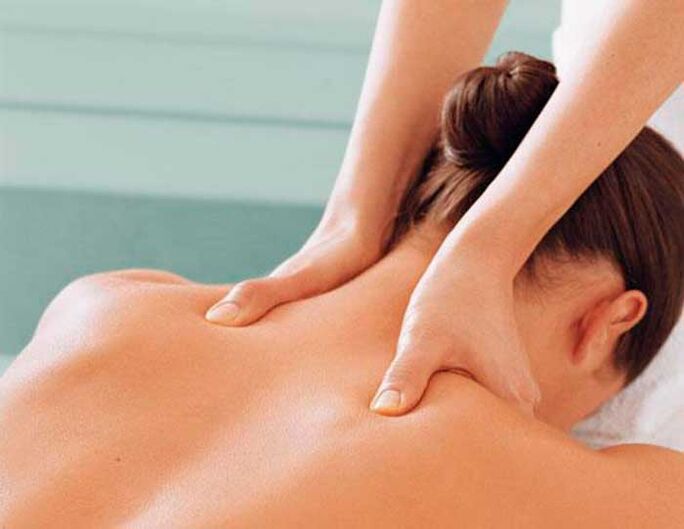
The neck is the life-determining part of the human body. The main blood arteries, veins, capillaries and nerve fibers pass through it and force the whole body to function fully. Blood channels supply nutrients and oxygen to the brain, without which the most important organ of the nervous system cannot function normally. If a person has neck pain, it is necessary to look for the causes of the disorder and eliminate them as much as possible.
Types of neck pain
Pain syndrome is divided into two main groups:
- Cervical (lumbago) - regularly spreads to the shoulders and beyond with different strength and dynamics. Frequent pulling has a painful character. The cause is a painful spasm of the neck muscles.
- Cervicitis is an unexpected sharp turn of the head, a sharp pain that occurs unexpectedly during prolonged stay in a restless state. At the same time, a person cannot turn his neck freely, he shakes his head due to severe pain. It "hits" on the shoulders, chest and hands. This pain is associated with the effect of stimuli on nerve endings passing close to the brain.
Causes of the disorder
Patients often have cervical pain. Occasionally there is a back spasm due to accidental head movements. Sometimes there is discomfort in the occipital region. Pain syndrome is especially unpleasant when it manifests itself in the morning due to a restless posture during sleep.
With a combination of adverse events, pain can occur as a result of untreated infectious diseases. They are so intolerable that it is impossible to think of a reason for their occurrence.
Neck pain occurs for various reasons:
- Non-specific.
- Vertebrogenic.
- In case of failure of internal organs.
- With the development of oncological formations of benign and malignant nature.
- In case of injury.
- With inflammation of bone tissue (subacute osteomyelitis, purulent lymphadenitis, spinal paralysis, meningitis, exacerbated thyroiditis).
Non-specific reasons

Patients often experience non-specific pain. They occur in response to overload of the cervical muscles and are considered a natural reaction of the body. This feeling usually occurs when a person sleeps in a restless state for a long time or is physically overworked.
Neck pain from severe dynamic loads. The body needs to rest well to get rid of unpleasant feelings. This pain is not very strong, does not last long and goes away on its own without requiring special treatment.
When the overload is persistent, physiological pain takes a chronic form - the degenerative-dystrophic process begins. Harmful factors should be eliminated immediately when disturbing symptoms appear and should not wait for the disease to develop.
The statistical cause of pain may be:
- Wrong position during sleep.
- Frequent head movements.
- High firm pillow.
Vertebral causes

Dysfunction of the cervical vertebrae, discs, joints that connect them, ligaments and muscles is the answer to the question of why the neck hurts. When pain syndrome is constantly observed, degenerative-dystrophic diseases of the spine are recorded in such patients during X-ray examination. Due to the anatomical structure of the neck, it is susceptible to this disease:
- The neck joints are extremely mobile.
- The vertebrae have a very fragile structure and small size.
- They support the skull and withstand huge loads every second.
- Neurovascular fibers are located inside the vertebrae.
Degenerative-dystrophic pathologies include:
- Osteochondrosis.
- Kyphosis.
- Spondylolisthesis (list).
- Lordoz.
- Spondylopathy.
- Spinal stenosis.
- Intervertebral hernia. With it, the neck hurts, mainly on one side.
Complications such as torticollis, disc herniation, spinal cord compression, sciatica progression, spinal deformity, persistent headaches, dizziness, and tinnitus may occur.
Internal problems

Anterior neck pain is associated with thyroid dysfunction. They usually manifest themselves in inflammatory lesions of the gland (thyroiditis), acute, subacute, chronic or autoimmune. The disease is manifested by:
- Rises in body temperature.
- Lethargy, drowsiness.
- Redness, perhaps swelling of the skin on the front of the neck.
- Choking, difficulty swallowing.
Thyroiditis causes systemic throbbing pain. It grows when you swallow, when you turn your head, when you check the gland.
Unexpected side pain in the side indicates inflammation of the lymph nodes in diseases of the ENT organs. The provocateurs of this situation may be:
- ENT diseases of a different nature (pharyngitis, laryngitis, sinusitis, otitis media).
- Dental caries.
- Gum disease.
- Retropharyngeal abscess.
- Infectious diseases.
The neck may lose its shape and swell significantly. The temperature rises rapidly, the symptoms of the development of the underlying disease are noted.
Development of oncological neoplasms

Neck pain causes cancer of the spinal tissues, blood vessels and internal organs in the neck. There may be spinal tumors:
- Primary (mesenchymal chondrosarcoma, osbolitosarcoma, lymphangioma).
- Secondary (myeloma, lymphogranulomatosis).
It turns out that the causes of neck pain are tumors of the spinal cord and nerve fibers.
Neck injury

The spine in the neck region is very fragile and sensitive, which indicates a tendency to various degrees of injury, for example:
- Fractures, bruises, bruises.
- Dislocations, subluxations.
- Twists, tears of ligaments and muscles.
- Rupture of the intervertebral disc.
- Extensive hematomas, bruises.
- Compression of spinal cord tissues.
Neck injuries are extremely dangerous. There are important centers in this region that allow the spinal cord to function. Affecting the brain at the level of segments 1 and 2 of the cervical vertebra causes sudden death. Injury to the lower segments makes a person unable to feel or move the body below the neck. Trauma to the 7th and 8th vertebrae affects the lower extremities.
Bone inflammation
The cervical spine may suffer from inflammation. Often they are diseases of the connective tissue system:
- Limban-Sachs disease.
- Rheumatoid arthritis.
- Periarteritis nodosa.
- Wagner's disease.
- MCTD (Sharpe syndrome).
- Progressive systemic sclerosis.
- Vasculitis.
- Ankylosing spondylitis
Causes during a patient's neck aches and pains are often associated with ankylosing spondylitis (ankylosing spondylitis). In this case, the vertebral joints become inflamed, deformed, and the neck vertebrae become completely immobile.
Neck pain in a child

In children, unlike adults, cervical pain is not in the defeat of vertebral tissues and structures, but in the following:
- Lymphadenopathy.
- Bone tuberculosis.
- Zaushnitsa (pig).
- Meningitis.
- tetanus.
- I have pneumonia.
- Retropharyngeal abscess.
- Rheumatic diseases (polyarthritis, oligoarthritis).
When a child feels neck pain and discomfort, it cannot be ignored. Consultation with a pediatrician is required, as the causes of this condition can be extremely serious.
Treatment and diagnosis

By identifying the root cause of the pain, you can completely free yourself. You can relieve symptomatic pain with the following medications:
- Analgesic and anti-inflammatory non-steroidal drugs.
- Muscle relaxants that relieve muscle tone and spasm.
- Glucocorticoid hormonal agents. They are used to increase the effect of painkillers.
- Chondroprotectors used for a long time to restore cartilage tissue and stop its disintegration process.
- Decongestants, anticonvulsants, antidepressants, vitamin therapy to relieve chronic pain.
An experienced specialist should be involved in the treatment of the disease. You should first consult a therapist. He will assess the patient's general condition according to the complaints, tell why the neck hurts, how to treat the pathology, what irritants should be avoided.
Depending on the cause of the disease, the therapist will recommend visiting such narrow specialists:
- Rheumatologist.
- Orthopedist.
- Traumatologist.
- Neurologist.
- Massage therapist, chiropractor.
- Physiotherapist.
The following research methods are prescribed for cervical pain:
- General blood test.
- Determination of ESR.
- Examination of rheumatoid factors.
- Radiography of the spine.
- CT and MRI of the spine (computed and magnetic resonance imaging).
When an adult or child feels pain in the neck, it may be a result of osteochondrosis, meningitis, stress, or a side effect of certain medications. Physicians need to determine exactly why the patient is experiencing persistent neck pain.
If, after examination, it is found that inflammation of the lymph nodes is the main cause of neck pain, they are prescribed:
- UHF.
- Back massage and skull base.
- Therapeutic gymnastics.
- Medications.
The disease should not be ignored. In the later stages of development, surgery will be required to open the lymph nodes and remove the accumulated pus.
Non-drug treatment

Complex therapy strengthens the cervical muscles, helps to relieve spasms, makes them elastic and resilient, improves blood flow, restores the maneuverability of the cervical vertebrae, prevents exacerbation and development of the disease. To do this, use:
- Physiotherapy.
- Acupressure.
- Manual therapy.
- Physiotherapy.
- Wear collars.
- Spa treatment.
- Acupuncture.
- Tightening of the spine.
Physical therapy, massage and gymnastics are not used until the pain subsides in the acute period. Modern physiotherapy methods allow you to achieve a successful result without strong drugs and surgery. O:
- Hilamat apparatus system (Elgos).
- Laser hilt therapy.
- Electrophoresis.
Doctors advise patients on what to do when they have a sore neck. Required:
- Sit up straight, do not bend while reading, writing, eating.
- The work chair must have an ergonomic backrest.
- Follow your posture while walking.
- Lie on a small orthopedic pillow.
- Rub your neck with prescribed ointments or gels that have an analgesic effect three times a day.
- Massage yourself to relieve pain.
For acute or painful neck pain, you should not do the following:
- Throw your head back sharply.
- Turn to the affected side often.
- Work, read, write in a constantly bent position.
- Wearing a collar abuse.
- Lie on a large, high pillow.
What to do if you blow your neck

Severe pain in the back of the neck, accompanied by inflammation of the muscles, occurs with prolonged exposure to cold air currents. People sometimes complain that they blow their necks. Doctors call this condition myositis. At the same time, the patient can not turn quietly, bend, throw his head back, his neck hurts a lot.
The doctor will help you to get rid of the disease quickly and effectively. Before going to his office, you should take a few steps to relieve the anxiety and pain:
- The painful area should be lubricated with a warming ointment (usually such ointments give off an unpleasant odor and cause a burning sensation on the skin).
- Massage into neck with smooth light movements.
- Apply dry heat to the inflamed area (wrap yourself in a woolen scarf, add a towel).
- Try not to make sudden movements.
Do not take painkillers without consulting a doctor. Only a doctor can prescribe them and determine the dose.
Treatment of cervical osteochondrosis
Neck problems with osteochondrosis are more common in the lower back. Often the lower segments of the vertebrae are affected - 5-6 or 6-7. The pain manifests itself in the back, strikes the neck on the left, is felt especially strongly during inflammation.
Osteochondrosis is a chronic disease with long-term vague symptoms and periodic exacerbations. The patient is prescribed for treatment:
- Physiotherapy (hydrotherapy is especially effective for this disease).
- Analgesics.
- Taking non-steroidal anti-inflammatory drugs. It is recommended that they be drunk for 3 weeks. Then the patient's condition is assessed and a decision is made on the further use of drugs in this group.
- Special therapeutic gymnastics.
- Manual therapy.
- In addition to conservative medicine, treatment with folk remedies is welcomed: lotions, compresses, decoctions, infusions, homemade ointments and creams.
If it is possible to get rid of osteochondrosis in the early stages, prevention should not be forgotten to prevent the recurrence of the disease.
Folk recipes

Neck pain can be relieved using folk recipes:
- The infusion of a series perfectly eliminates inflammation. You need 1 tablespoon for the medicine. l. dry raw material, a glass is filled with boiling water. After 3-4 hours of infusion and filtration, you can drink half a glass before eating.
- The effective ointment is made from a mixture of St. John's wort, pine shoots, eucalyptus leaves, mint and snake root. All components are pulverized. Then pour 100 ml of boiling water and boil for 4-5 minutes. Gradually add 75 g of melted butter (vegetable or butter can be used) to the broth. The ointment is applied after hardening. Store in the refrigerator.
- In the same way you can prepare an ointment with plantain, hops, burdock, lavender, marshmallow, dandelion, yarrow.
- The perfect healing ingredient is an ointment based on dandelion root, maple buds, planted coriander.
In emergencies and for serious indications, surgical treatment is used - if complications of vertebral disease develop, the patient suffers from chronic severe pain that can not be eliminated with conservative treatment for six months. Surgery to relieve neck pain carries great risks. Therefore, for starters, all available treatments should be taken to combat the disease.






















